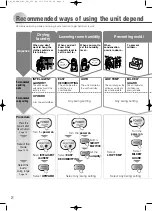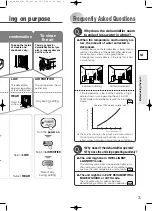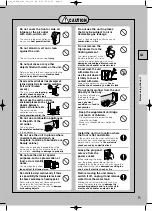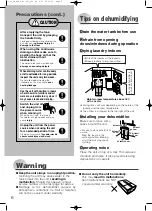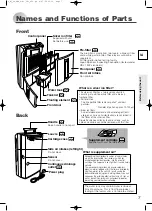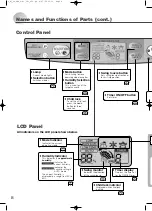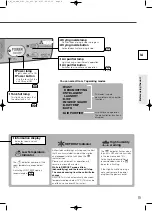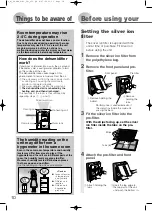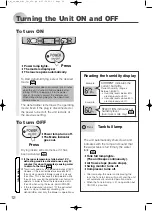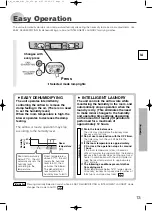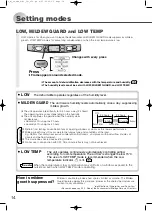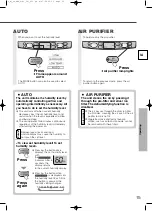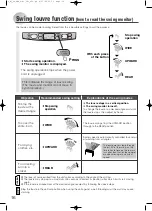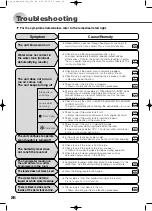
¡
LOW TEMP
The unit operates continuously automatically controlling airflow
according to room temperature. The air flow is strongest below 15
°
C.
The use of LOW TEMP mode is recommended when the Low
temperature indicator
is lit.
When the temperature is low, condensation may still form on windows exposed to the
outside air even when LOW TEMP mode is operating.
¡
MILDEW GUARD
The unit lowers humidity levels automatically once a day, suppressing
mildew growth.
¡
The unit operates intermittently for 2-4 hours a day (24 hours).
The operating time varies depending on the humidity.
¡
The unit continues to operate when the humidity does
not decrease.
• Humidity 40%
→
Approx. 2 hours
• Humidity 50%
→
Approx. 4 hours
∞
Refrain from turning on ventilation fans or opening windows or doors as this lowers performance.
∞
Mildew growth may still occur due to the fungus type and conditions of the room.
E.g. Rooms that contain excessive condensation, bathrooms, and places with bad airflow (insides of
closets and behind furniture).
∞
This mode does not remove existing mildew.
∞
Do not use in conjunction with OFF Timer mode. Effects may not be achieved.
14
Setting modes
Inf
ormation
Information
LOW, MILDEW GUARD and LOW TEMP
LOW mode is for when you want to leave the dehumidifier on. MILDEW GUARD mode suppresses mildew
growth. LOW TEMP mode is for preventing condensation or when the room temperature is low.
Changes with every press
Press
¡
Frame appears around selected mode.
¡
The amount of dehumidification decreases with the temperature and humidity.
¡
The humidity level cannot be set with LOW, MILDEW GUARD, and LOW TEMP.
¡
LOW
The dehumidifier operates regardless of the humidity level.
ON
24 hours
Dehumidifies
Dehumidifies
Standby
24 hours
Standby
How is mildew
Mildew is unable to produce new spores if dried as mycelia. The Mildew
growth suppressed?
Guard feature applies this principle. (However, the spores themselves are
resilient to dry conditions.)
“Identification of Aspergillus and Penicillium”
<Research paper by Dr. K. Abe of the Environmental Biology Research Center>
Repeat
3
9
e_mj_e80dx_h(01_19)_e33.qx 8/27/56 23:13 Page 14


